مراكش
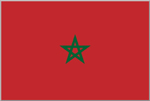
Imperial former capital city of Morocco

Founded in 1070 but populated by Berbers since time immemorial, Marrakech or (Marrakesh) is one of the most important trading and economic centres of Morocco, and was the capital multiple times throughout its history. Nicknamed the “Red City” for the ochre-toned walls of its extensive medina, its main square the Djema el-Fna is one of the busiest and most riotous in all of Africa.
We spent two nights in Marrakech as part of our tour by train around Morocco in early 2003, which although it was before the European budget airlines had arrived, the medina had already been well touristified and was much tidier and more orderly than the medieval chaos of Fes. We enjoyed getting lost among the market stalls and haggling in French over pennies, and also caught the fall of the statue of Saddam on Al Jazeera while sitting in a café. At some point during our time in the city, the local diet caught up with us and the remainder of the trip was directed by the ready availability of flushing facilities.

Our lodging at the Hotel Central Palace – only two of those words were accurate. It was a couple of streets away from the Djema el-Fna, and was neither as posh as it looks or sounds. It was cheap, however, at 10 Euros a night (based on two sharing, breakfast not included), but you won’t get toilets that flush for that price, or even a toilet at all, save for the hole in the floor. We soldiered through, with the indecisive flow from the shower being a bit of a drag, but there were water shortages in the country at the time.
Marrakech’s medina is where all the souks and mysterious shops are located. Although much cleaned up and gentrified, it was still very interesting, but didn’t feel as authentic as Fes. Most of the narrow streets are protected from the sun by shades built between the shops.
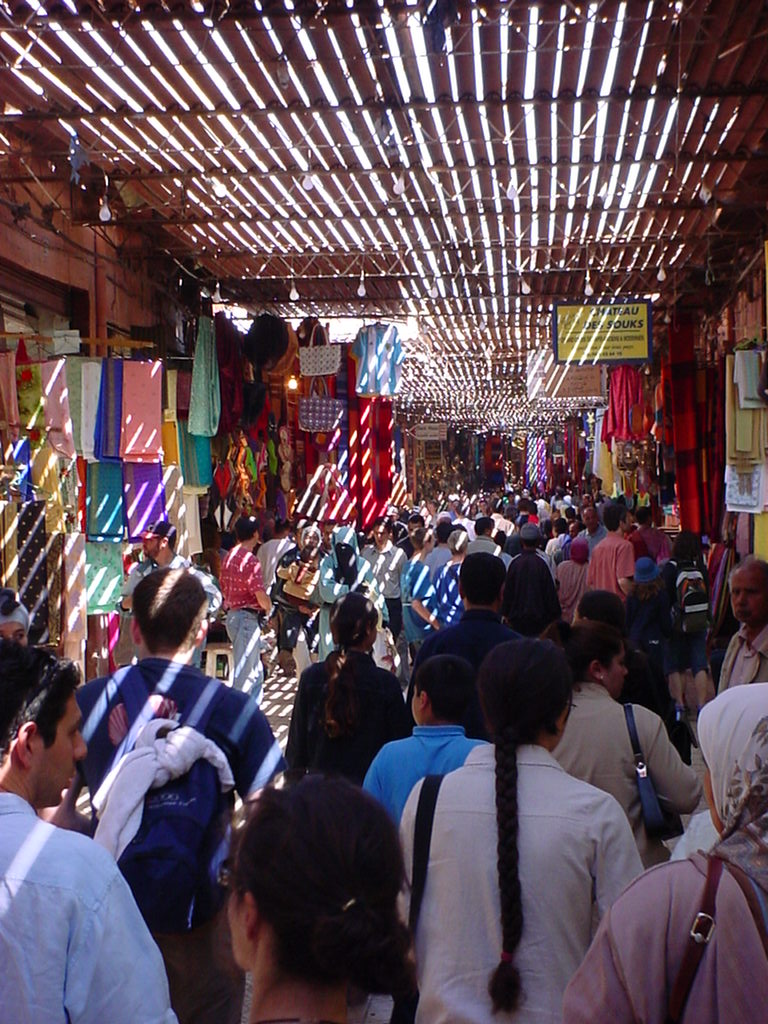

Many of the shops were beautifully presented with the finest arts and crafts of the Moroccan populace.
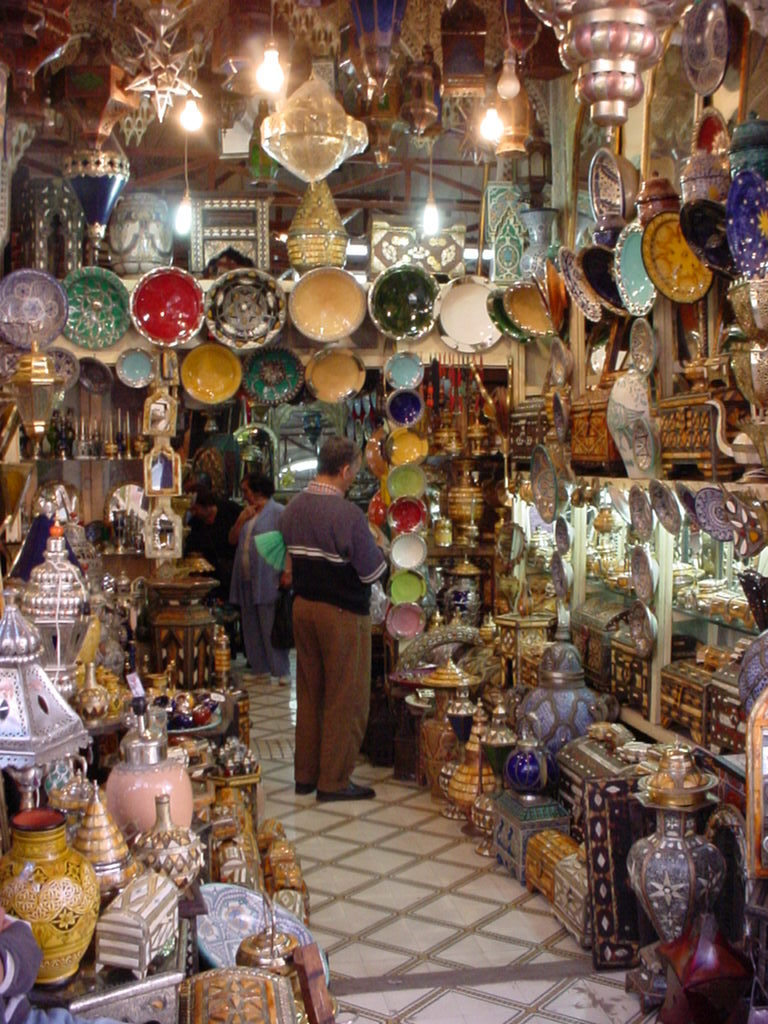

There were a few of these lads going around the medina and the Djema el-Fna, indicating that they wanted you to take their picture then cross their palms with silver. We eventually succumbed and got four photos out of them for a Euro. They are traditional guerrabs or water porters, and will serve water in their brass cups from the goatskin bags under their arms.
Continuing our wanders through the medina, we next found ourselves in the carpets and leather bags district.
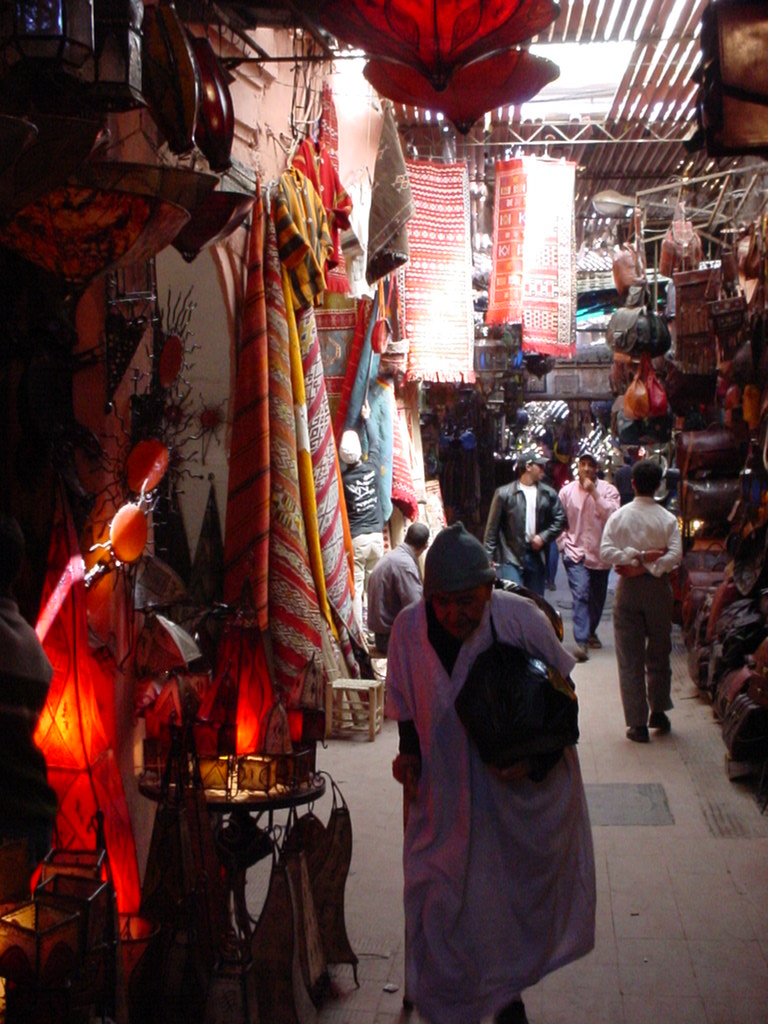
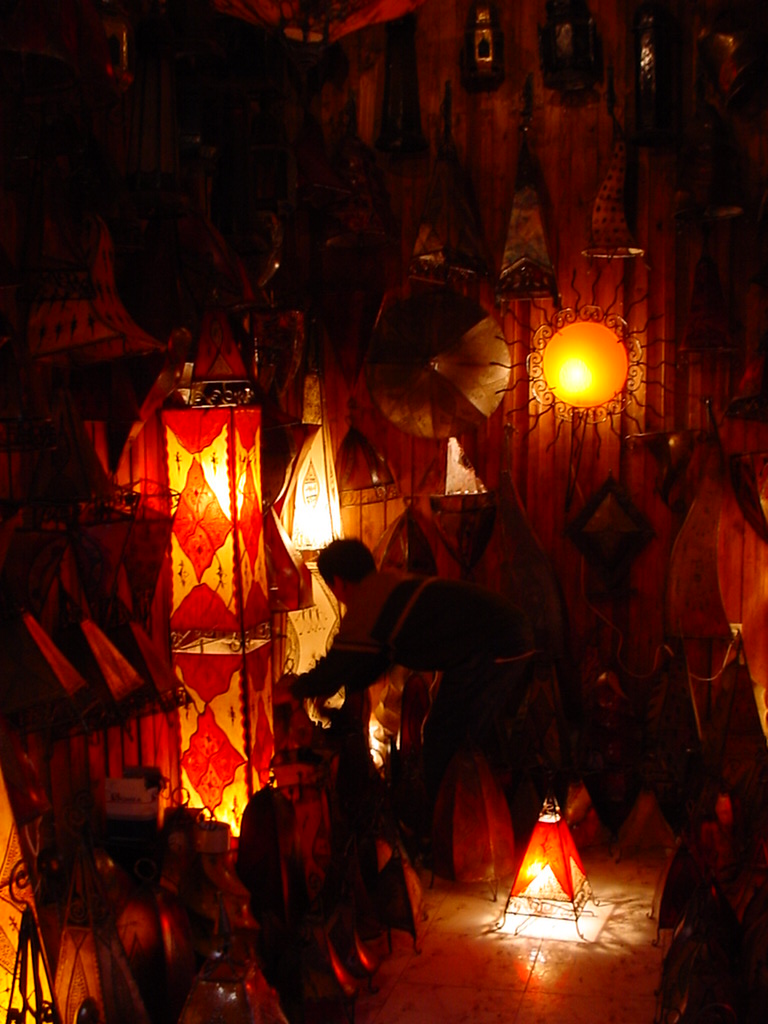
Deep within a dark section of the maze-like medina was this atmospheric lamp shop.
We emerged into the sunlight at a local market, with food being sold straight off the ground. Note the woman on the left covering her face, and the man on the right in the traditional Berber hooded green cloak. This picture captures much of the essence of Morocco, I think.
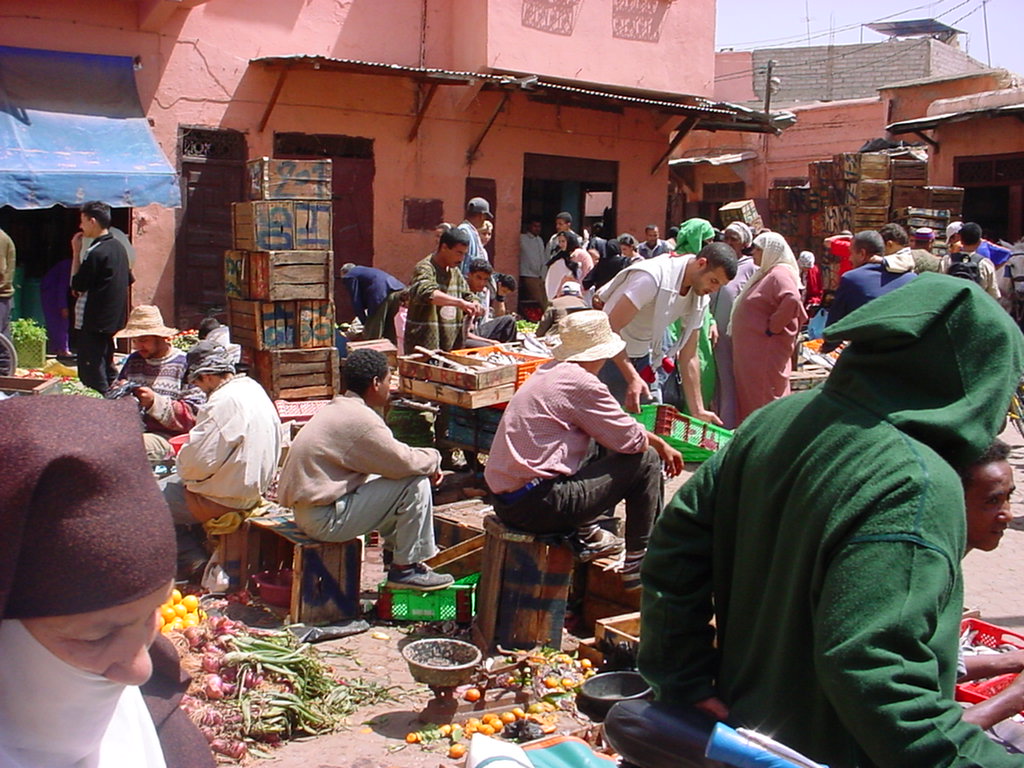
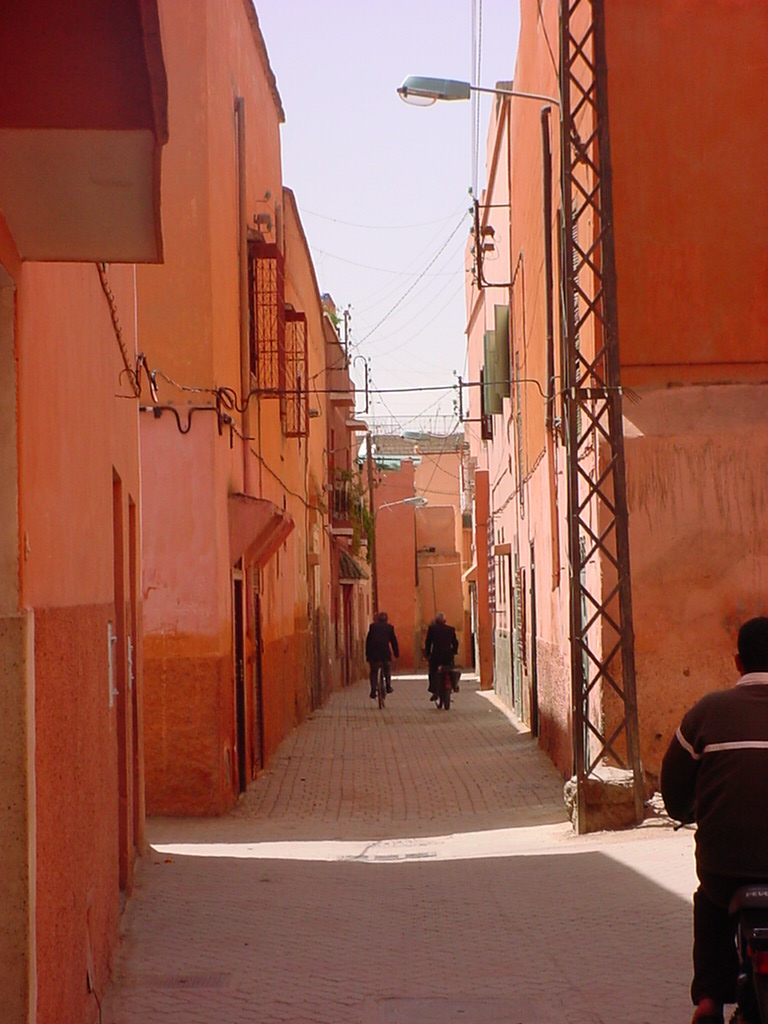
South of the Djema el-Fna is the Jewish quarter, or Mellah. It dates back to 1558 and is painted generally reddish, the colour of the earth and that which is synonymous with the Red City of Marrakech. Blue is the colour of Fes, Green the colour of Meknes and white that of Rabat.
El Badi Palace at the south side of the medina was the royal residence from its completion in 1593, but quickly fell into ruin within only a few short decades. Much of the rich materials and carvings were stripped out and reused around the country, including at the Mausoleum of Moulay Idris II in Fes.
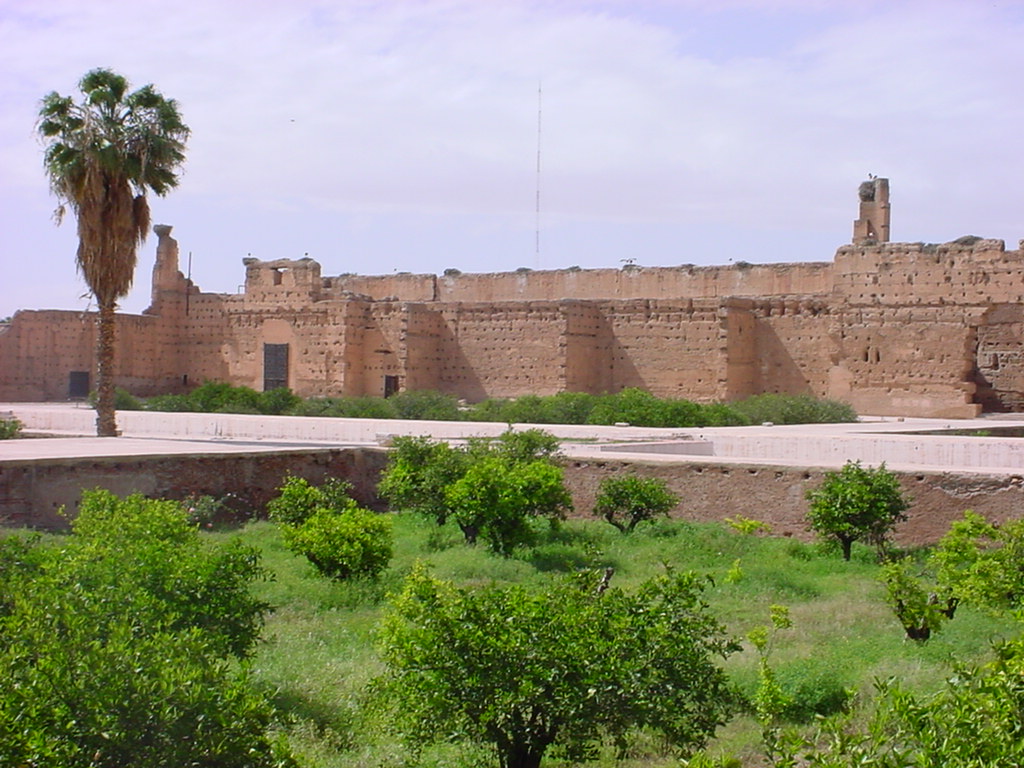

These days the primary residents are a large number of nesting storks. It’s clear that even the binding metals between the bricks have been raided, in a similar fashion to the Colosseum in Rome.
Looking towards one of the south entrance gates of El Badi Palace, across a dry pool.
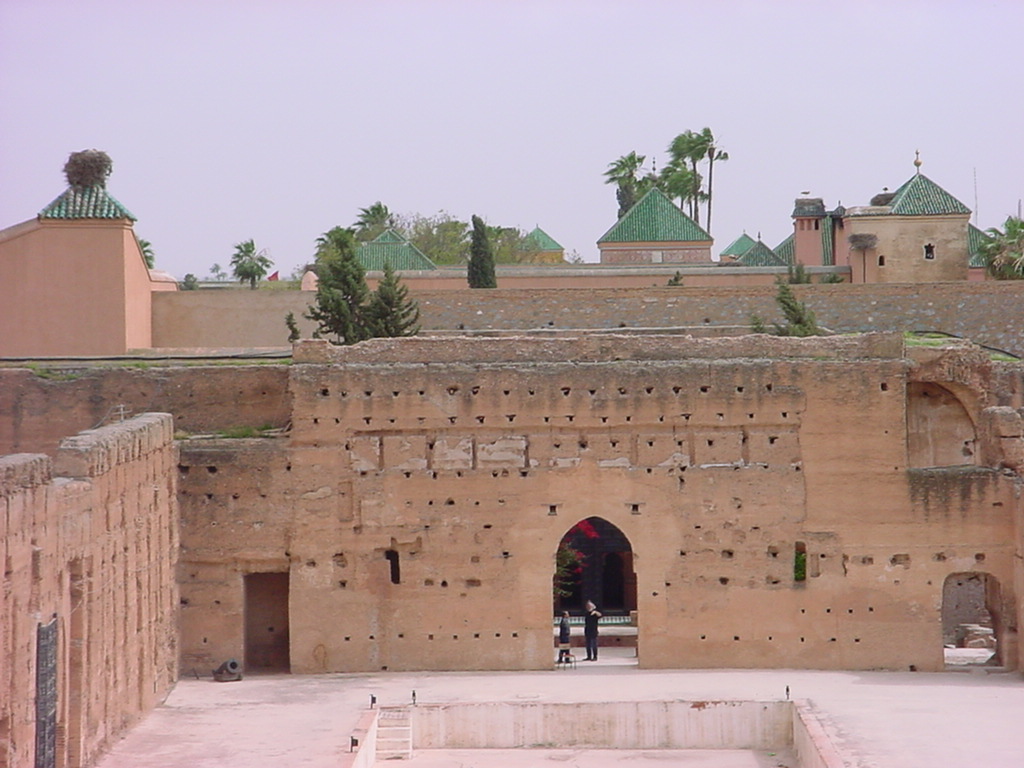
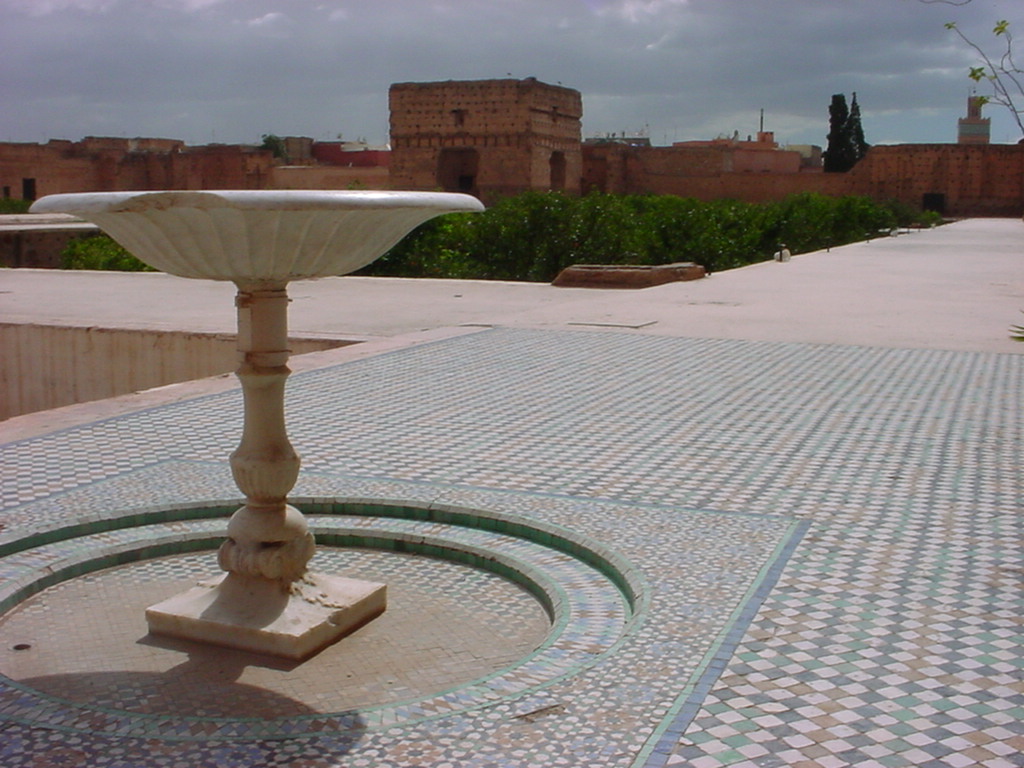
View of the main courtyard towards the western pavilion, across the sunken gardens and a dry fountain, possibly not an original fixture.
Back into the streets of the old city, and a great example of the deep blue-indigo colour of fabric is modelled.
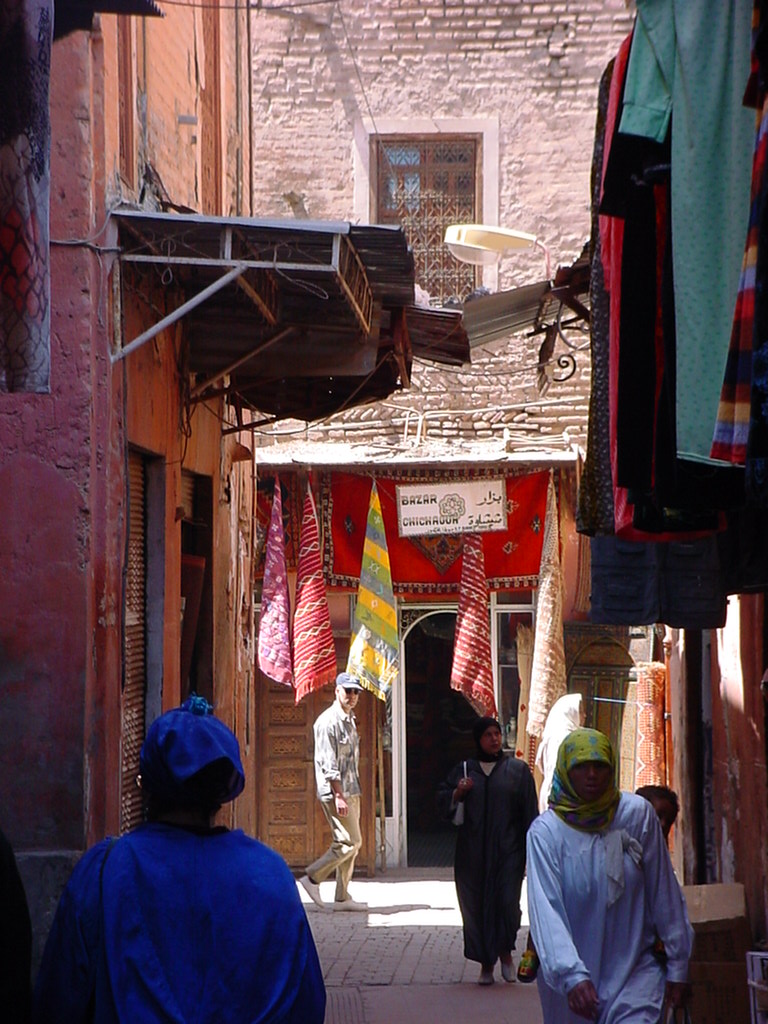

Another local market, this time selling clothing and objects of indeterminate nature hanging from the stall behind.
The Djema el-Fna or Jemaa el-Fnaa is the central square of Marrakech and where all the action happens. The café Argana in the background was the site of a deadly terrorist bombing several years later in 2011, targeting tourists in Morocco.
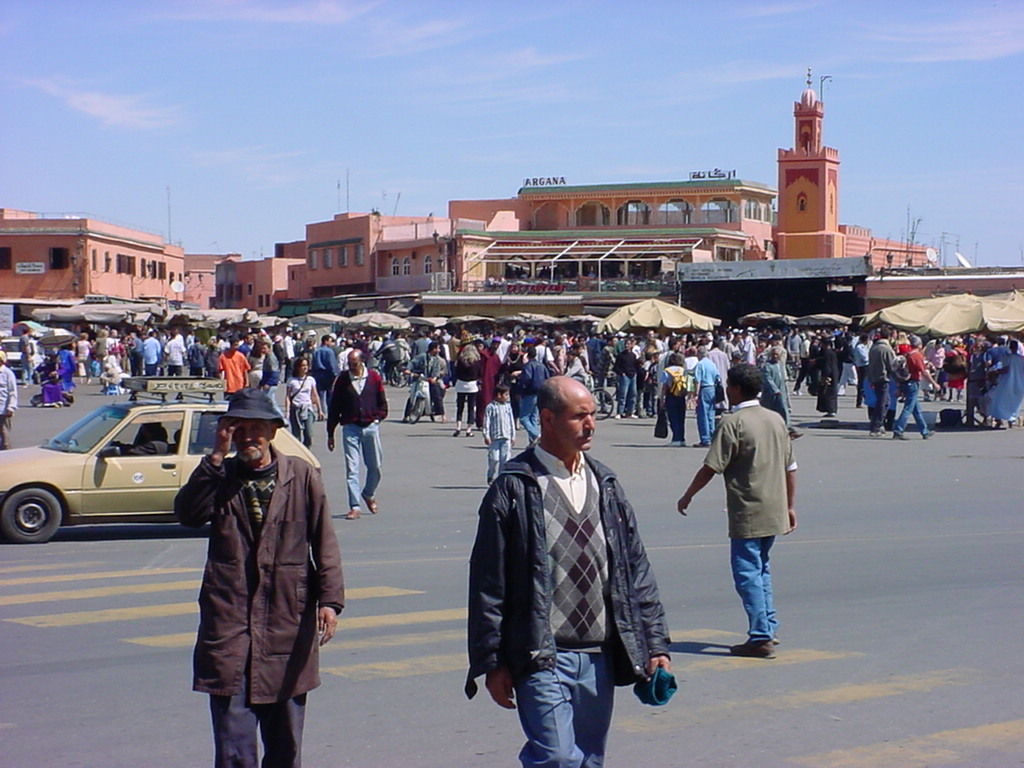
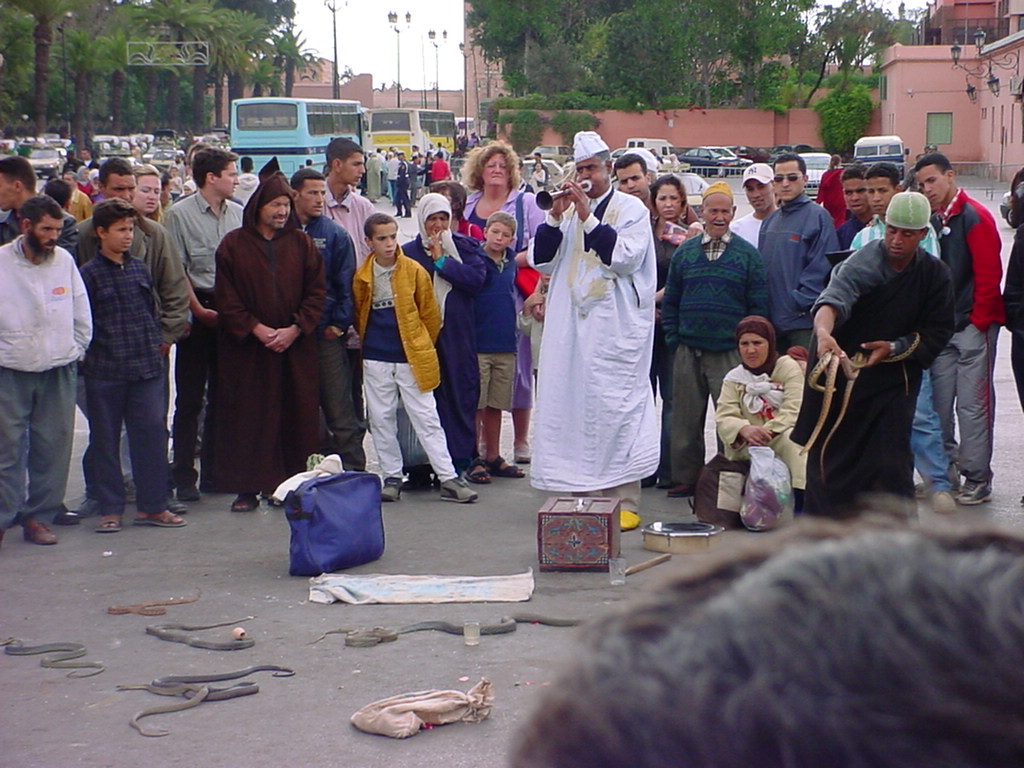
By day, snake charmers and trained monkey-keepers entertain the locals and fleece the tourists. This photo wasn’t cheap (even with someone’s head in the foreground), and they’re very good at spotting even surreptitious attempts at getting a snap.
From the roof of a pizza place next to the Djema el-Fna all the commotion down below can be seen as the square gets into night-mode. This is a smaller section of the decidedly not-square square around the corner from the main section, but still full of vendors and hustlers. My 2023 research tells me the pizza place is now called Zeitoun Café.


By night the Djema el-Fna hosts hundreds of street vendors selling all sorts of delicious treats from cous cous to sheep head. We sat and ate a many-course meal at this particular place which was very nice indeed.
Smoke rising from the Djema el-Fna from the cooking, makes for an atmospheric shot of the minaret of Kutubiyya Mosque which dominates the skyline. The minaret dates back to around 1195 and is the second mosque on that site. It may have inspired the design of the Giralda in Seville.
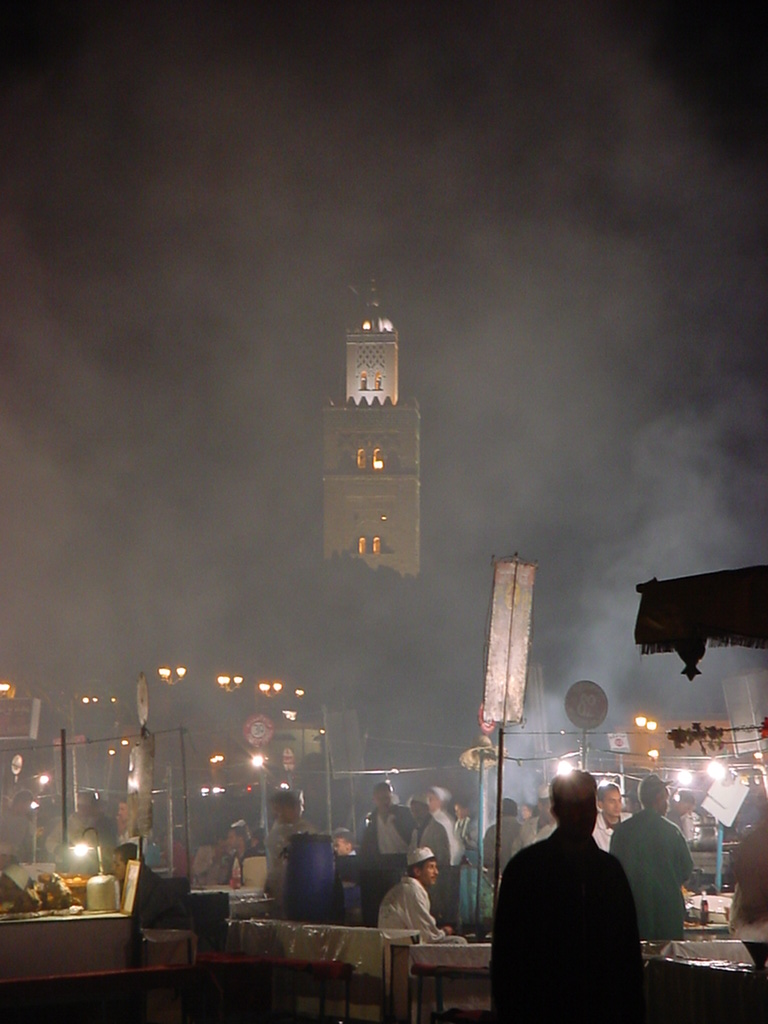
Created 2003 | Updated 2023
